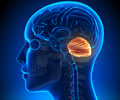A new study shows the damage in neurodegenerative diseases is linked to a natural by-product of oxidation called nitration.
A study by the Department of Energy's Pacific Northwest National Laboratory and UCLA's David Geffen School of Medicine shows that the damage in neurodegenerative diseases is linked to a natural by-product of oxidation called nitration. It was explained that Parkinson's, Alzheimer's, Lou Gehrig's disease and other brain disorders are a few among a growing list of problems in health conditions that can be credited to oxidative stress, the cell damage that is usually caused during metabolism when the oxygen in the body assume an even more chemically reactive forms. But researchers had never been able to find the exact connection between the processes of oxidation and the neurodegenerative diseases.
"We looked at a healthy brain and found nitration of proteins that are implicated in neurodegenerative disease," said Colette Sacksteder, PNNL scientist and lead author of the study, published in the July issue of the journal Biochemistry (online Wed., June 28). PNNL scientist Wei-Jun Qian was co-lead author.The results are from the most detailed proteomic analysis of a mammalian brain to date – that is, a survey of nearly 8,000 different, detectable proteins in the mouse brain. The research suggests that many neurodegenerative diseases leave a biochemical calling card, or biomarker, that could be used to predict the earliest stages of brain impairment. Many biomedical researchers believe that detecting disease states before symptoms occur is the key to reversing many as-yet-incurable diseases.
The biomarker is known as nitrotyrosine, made when an amino acid in the brain, tyrosine, is in the presence of an oxidative-stress molecule called peroxynitrate. The biomarker was found on 31 sites along 29 different proteins, half of which had been previously implicated in several of the neurodegenerative diseases.
"Our study certainly suggests that the sensitivity of certain proteins to peroxynitrite is an early contributor to neurodegeneration, but other factors may also be involved," said Diana Bigelow, PNNL staff scientist and the paper's corresponding author. "The next step, of explicitly looking at tissues with neurodegenerative disease, will test this hypothesis."
Source: Eurekalert.






